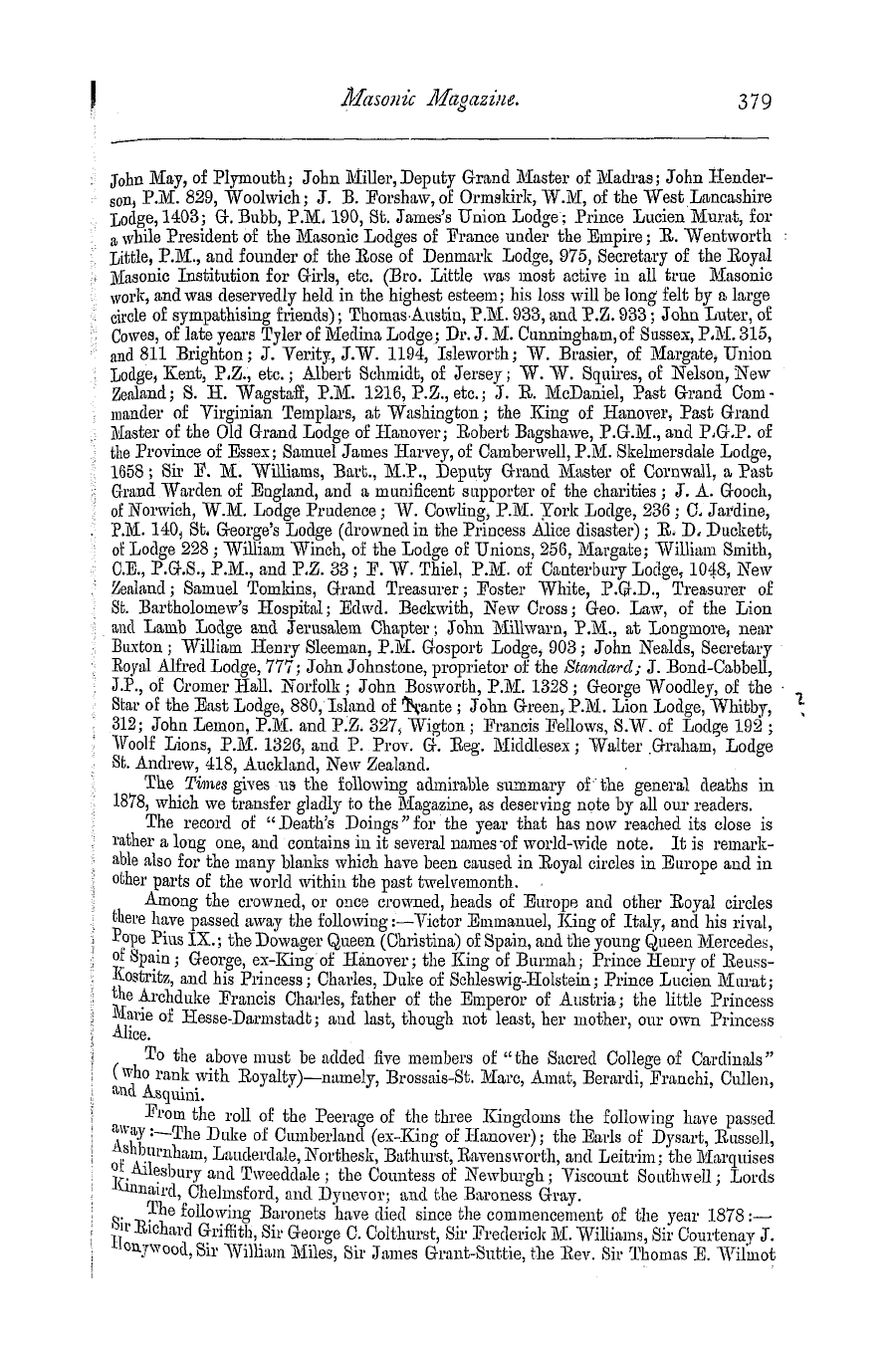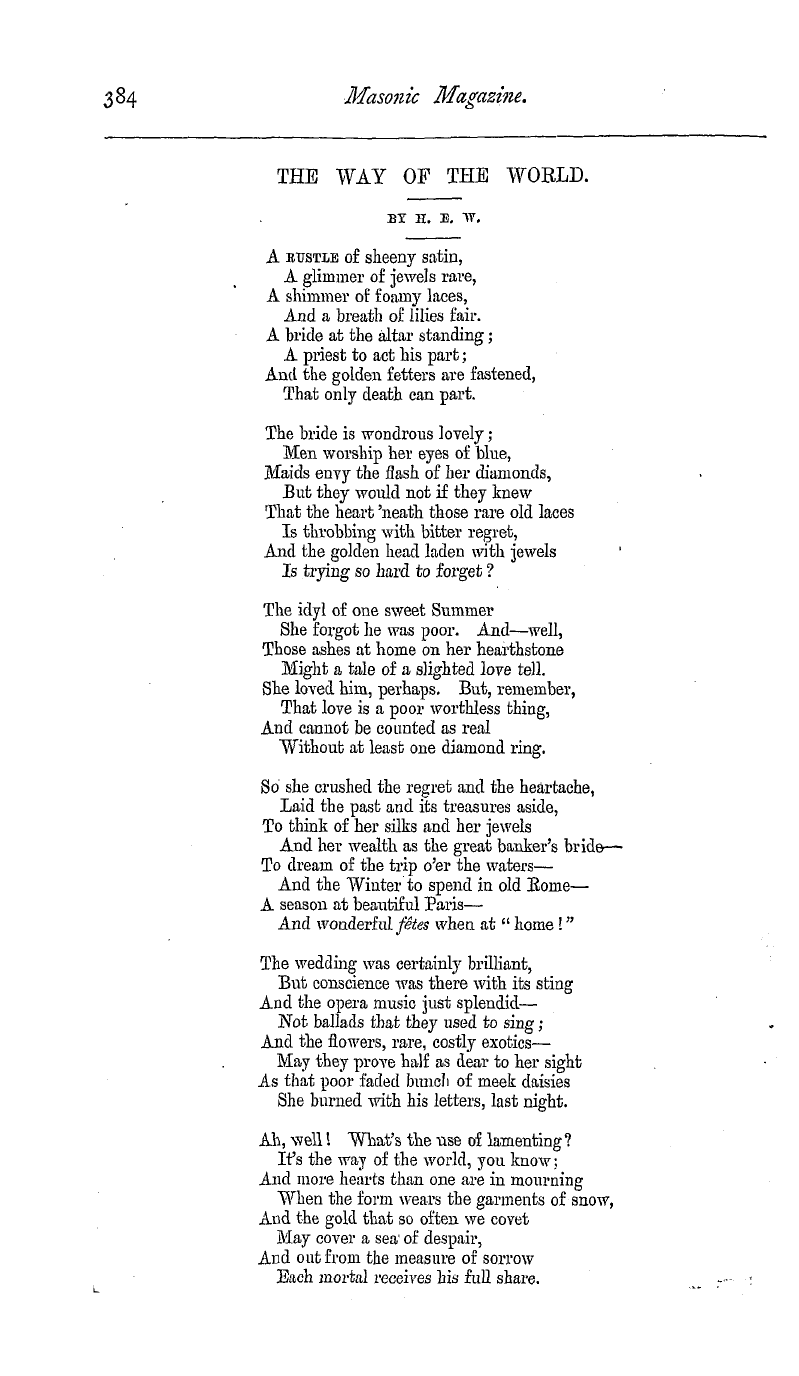-
Articles/Ads
Article GOTHIC ARCHITECTURE.* ← Page 2 of 4 →
Note: This text has been automatically extracted via Optical Character Recognition (OCR) software.
Gothic Architecture.*
unable to support the pressure of large vaidts , lost , through the introduction of the latter , their principal destination . Having been retained as ornaments in vaidted buildings , they ivere employed in the situations disengaged from the Avails , as in the interior of the Pantheon ; or half engaged Avith the Avails , as in Mecamas' Villa , in the Theatre of Marcellns , and the Coliseum . This combination of vaults ivith columns and horizontal architraves , parts totally heterogeneous at their origin , affords , in my
opinion , a very simple solution of the riddle Avhich the specimens of later Roman and Byzantine architecture , as Avell as those of the Middle Age up to the latter half of the twelfth century , offer throughout the different countries of Em-ope by the frequent disharmony of their forms and construction . To solve this , a number of hypotheses hai'e been invented . If , as in the Temple of Peace , enormous cross A'aults could , though but in appearancebe rested on columns and their friezesthere AA'as no reason AA'hin
, , y , smaller distances , they might not likeAvise be connected by arches , instead of horizontal architraA'es . And as columns AA * ere already in most cases considered as mere decorations , requisite for effect , and might be omitted AAdthout prejudice to the stability of the building , the Romans did not scruple to introduce them even in places Avhere they were to serve merely as ornaments AA'ithout any apparent object . In this stage of decline Avas the Roman architecture anterior to the invasion of the
barbarians , under Diocletian , the last emperor before the introduction of the Christian religion . In the baths of this monarch at Rome Ave find large groined vaulting on columns , counterpoised by flying buttresses in the exterior , which were subsequently so much hnproA'ed in larger churches . In his palace at Spalatro , the colonnades of the court-yards are connected by means of arches resting directly upon the columns , and over the Porta Aurea ( golden gate ) , the principal entrance of the palacethere are rows
, of lesser columns also connected by arches , as decorations . All this SIIOAA ' , that the decline of the empire AA'as also attended by the decay of the arts ; and that this decay Avas brought on by the Romans themselves , a long time before the invasion of foreign nations .
When Constantine removed the seat of the Roman empire to Byzantium , and Christianity became the only religion of tlie state , it seemed likely that architecture shoidd have derived a new splendour from the extensive buildings which the Emperors erected to embellish their new residence . * I do not knoAV Avhetiier any of the edifices that Avere then built at Byzantium are still in existence : but Avhen Ave observe how the buildings at Rome , particularly the Triumphal Arch of Constantine , as far as it Avas
renovated at that time , are constructed , Ave are soon sensible to ivhat extent unfortunate Rome had already declined . The decay of the arts and the decline of the general prosperity , introduced , after Constantino ' s time , the custom of pulling do \ ATi old buildings to erect new ones with their materials . It is evident that the columns and parts of the old buildings thus applied could not possibly suit the new edifices . A total neglect of exact proportions ivas the natural consequence of this ruinous practice .
The style of budding probably underwent less alteration in dwelling-houses and strongholds , or fortresses , on AA'hich the existence of empires depended in those times more than in ours . The walls and toivers of the palace at Spalatro , and many other edifices of that-period , still manifest considerable stability ; and the frequently tottering emp ire of the East AA'as often indebted for its preservation , during eleven centimes , to the solidity and heig ht of the Avails and toAvers of Byzantium . But the st yle of building at
edifices for public worship Avas much more extensively altered . The temples , Avhich their orig in had never been destined to receive large congregations in their interior , were either not sufficiently roomy to serve as churches , ' or they Avere at first regarded as having been profaned by the ivorship of the heathen gods . Their place was supp lied by basilic ® , partly Avith flat , timber roofs , as was . generally the case , and partly vaulted Churches were rarely built on a circular or polygonal plan , after the model of the Pantheon or of the Temple of Minerva Medica . The Avant in these round churches , ot a chancel , of vaidted aisles on each side of the nave , and of a portico , frequently induced
Note: This text has been automatically extracted via Optical Character Recognition (OCR) software.
Gothic Architecture.*
unable to support the pressure of large vaidts , lost , through the introduction of the latter , their principal destination . Having been retained as ornaments in vaidted buildings , they ivere employed in the situations disengaged from the Avails , as in the interior of the Pantheon ; or half engaged Avith the Avails , as in Mecamas' Villa , in the Theatre of Marcellns , and the Coliseum . This combination of vaults ivith columns and horizontal architraves , parts totally heterogeneous at their origin , affords , in my
opinion , a very simple solution of the riddle Avhich the specimens of later Roman and Byzantine architecture , as Avell as those of the Middle Age up to the latter half of the twelfth century , offer throughout the different countries of Em-ope by the frequent disharmony of their forms and construction . To solve this , a number of hypotheses hai'e been invented . If , as in the Temple of Peace , enormous cross A'aults could , though but in appearancebe rested on columns and their friezesthere AA'as no reason AA'hin
, , y , smaller distances , they might not likeAvise be connected by arches , instead of horizontal architraA'es . And as columns AA * ere already in most cases considered as mere decorations , requisite for effect , and might be omitted AAdthout prejudice to the stability of the building , the Romans did not scruple to introduce them even in places Avhere they were to serve merely as ornaments AA'ithout any apparent object . In this stage of decline Avas the Roman architecture anterior to the invasion of the
barbarians , under Diocletian , the last emperor before the introduction of the Christian religion . In the baths of this monarch at Rome Ave find large groined vaulting on columns , counterpoised by flying buttresses in the exterior , which were subsequently so much hnproA'ed in larger churches . In his palace at Spalatro , the colonnades of the court-yards are connected by means of arches resting directly upon the columns , and over the Porta Aurea ( golden gate ) , the principal entrance of the palacethere are rows
, of lesser columns also connected by arches , as decorations . All this SIIOAA ' , that the decline of the empire AA'as also attended by the decay of the arts ; and that this decay Avas brought on by the Romans themselves , a long time before the invasion of foreign nations .
When Constantine removed the seat of the Roman empire to Byzantium , and Christianity became the only religion of tlie state , it seemed likely that architecture shoidd have derived a new splendour from the extensive buildings which the Emperors erected to embellish their new residence . * I do not knoAV Avhetiier any of the edifices that Avere then built at Byzantium are still in existence : but Avhen Ave observe how the buildings at Rome , particularly the Triumphal Arch of Constantine , as far as it Avas
renovated at that time , are constructed , Ave are soon sensible to ivhat extent unfortunate Rome had already declined . The decay of the arts and the decline of the general prosperity , introduced , after Constantino ' s time , the custom of pulling do \ ATi old buildings to erect new ones with their materials . It is evident that the columns and parts of the old buildings thus applied could not possibly suit the new edifices . A total neglect of exact proportions ivas the natural consequence of this ruinous practice .
The style of budding probably underwent less alteration in dwelling-houses and strongholds , or fortresses , on AA'hich the existence of empires depended in those times more than in ours . The walls and toivers of the palace at Spalatro , and many other edifices of that-period , still manifest considerable stability ; and the frequently tottering emp ire of the East AA'as often indebted for its preservation , during eleven centimes , to the solidity and heig ht of the Avails and toAvers of Byzantium . But the st yle of building at
edifices for public worship Avas much more extensively altered . The temples , Avhich their orig in had never been destined to receive large congregations in their interior , were either not sufficiently roomy to serve as churches , ' or they Avere at first regarded as having been profaned by the ivorship of the heathen gods . Their place was supp lied by basilic ® , partly Avith flat , timber roofs , as was . generally the case , and partly vaulted Churches were rarely built on a circular or polygonal plan , after the model of the Pantheon or of the Temple of Minerva Medica . The Avant in these round churches , ot a chancel , of vaidted aisles on each side of the nave , and of a portico , frequently induced















































